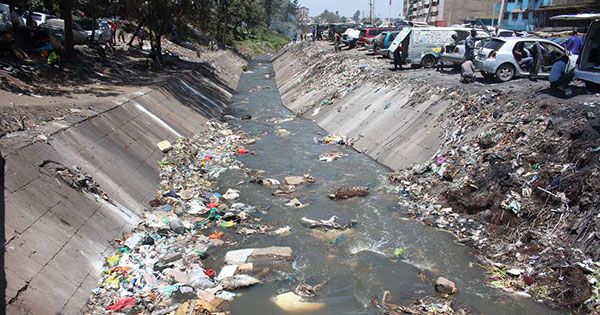- In Kenya, rivers serve as water sources for agriculture, tourism, industry, and biodiversity conservation while facilitating social, economic, and cultural activities.
Rivers are not merely bodies of water; they are highly productive ecosystems that play a vital role in maintaining ecological integrity and supporting various socio-economic activities.
In Kenya, rivers serve as water sources for agriculture, tourism, industry, and biodiversity conservation while facilitating social, economic, and cultural activities.
However, despite the Kenyan government's commitment to sustainable utilization of wetland resources through the ratification of the Ramsar Convention, the management of rivers in the country still needs to be improved and more effective.
Unsustainable activities, resource conversion, and overexploitation continue to degrade rivers, posing significant challenges.
Nairobi River, which originates from the Ondiri swamp in Kikuyu and flows through the city of Nairobi, is a prime example of a river suffering from severe pollution.
Despite being a freshwater source, it has become heavily contaminated due to commercial and industrial activities along its banks.
Industrial waste, chemicals, heavy metals, sewage, and pharmaceutical waste have all contributed to its degradation.
During a recent visit to the upstream area of the Nairobi River, I was shocked to witness the extensive encroachment that disrupts the river's hydrological regimes.
Violations of the Environmental Management and Coordination Act have resulted in blatant disregard for riparian land regulations, which require a minimum of 6 meters and a maximum of 30 meters on either side of the river bank from the highest watermark.
Intensified construction activities have led to the deliberate modification of river banks, obstructing waterways and compromising the river's ecological integrity.
To ensure sustainable development with minimal environmental harm, the Environmental Management and Coordination Act emphasizes the significance of Environmental Impact Assessment (EIA) in new project execution and ecological planning.
However, the question remains: Who supervises and approves construction or building activities on riparian land?
In light of the challenges faced by rivers like the Nairobi River, it is imperative to consider granting legal rights to rivers.
Viewing rivers as living resources with legal personhood would provide them with legal protection, enabling authorities to safeguard their well-being and integrity.
By granting rivers legal rights, the responsibility for their preservation would be established, ensuring that decisions regarding construction, development, or any other activities near rivers prioritize the protection and sustainability of these vital ecosystems.







-1760431543-md.jpg)




